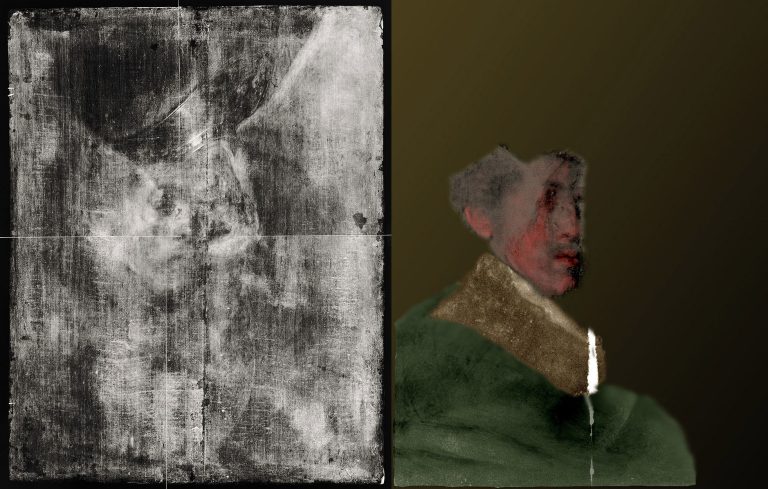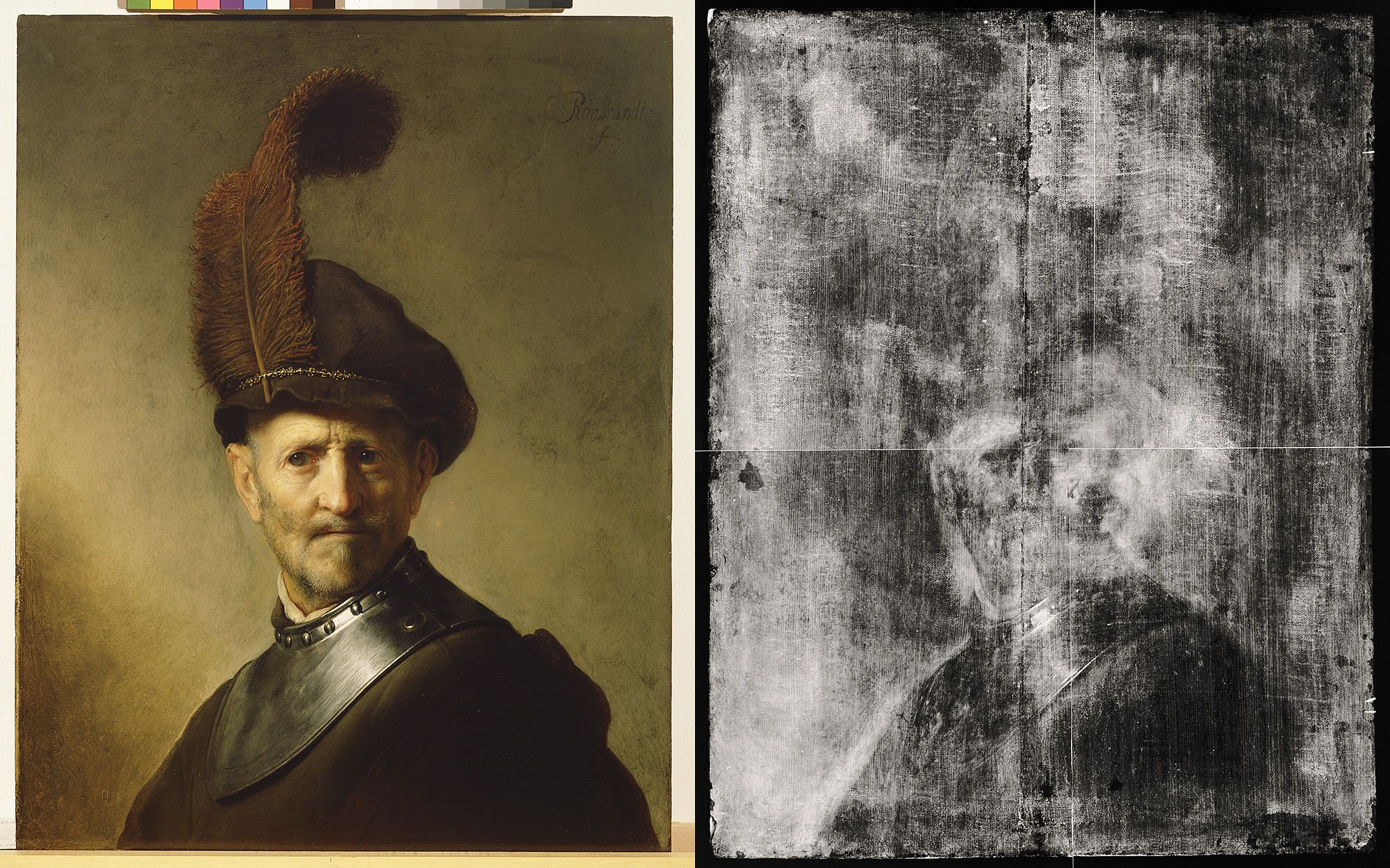Art historians knew another painting was hidden under Rembrandt’s Old Man in Military Costume. The best of scanners revealed the hidden painting in detail and colour for the first time.
“We knew something was hiding,” says Professor Joris Dik (materials science at the Faculty of 3mE), “but we didn’t know what it looked like.” Painters re-using their canvasses is not new – it happened all the time. But for art historians such double layers are a treasure cove since it offers them a glimpse of the artist’s workshop.
This particular painting, Rembrandt’s Old Man in Military Costume, gave away it’s secret when it was X-rayed in 1968. Besides the black and white image of the Old Man, another pattern became visible. Turning the image upside down helped to recognise a face. But that was about as far as it went.
Art historians would like to see more detail, as the knowledge can help them in attributing the painting. Does the underlying painting look like one from Rembrandt as well, for example, or has one of his students painted it?
In 1996, the Getty researchers made an attempt to get colour information on the hidden painting by subjecting it to neutron radiation. A neutron beam activated nuclei in the paint and careful registration of the radiation afterwards gave clues as to where certain elements were present in the painting. Not all elements show up equally well, but manganese and cobalt showed up pretty clearly.
Another technique, X-ray fluorescence or XRF, also produces information about the chemical composition of hidden layers. A tightly focussed X-ray beam scans the area under investigation. As a result, the paint sends back fluorescent X-rays. Spectral analysis of these fluorescent X-rays produces distribution maps of single elements such as mercury, lead, copper and other metals used in pigments.
The trouble was that the XRF scanning area used to be very small, or the scanner was very big and immobile. The new mobile XRF scanner can be, and was indeed, operated in the museum in Los Angeles.

The spectral information from the XRF-scan, from the previous neutron activation imaging and some cross sections from the painting, allowed the researchers to reconstruct the colours of the hidden painting. They knew the distribution of the elements copper (olive green), iron (yellow to brown), mercury (red) and lead (white). This information enabled them to add colour to the hidden painting.
The question the was: does it look like a painting from Rembrandt? As often, the opinions are divided. Rembrandt expert Prof. Ernst van de Wetering doesn’t think so. Experts from the Getty Museum see the hidden painting as a self-portrait by the master and Curator Gregor Weber (Rijksmuseum) does think the painting looks like a Rembrandt, but not a self-portrait.
Professor Dik knows by now that his research sparks such debates. He said that he aims to keep improving scanning techniques to feed art historians with more details and new arguments.
Researchers from TU Delft, the J. Paul Getty Museum and the University of Antwerp published their findings in the materials science magazine Applied Physics A. on September 1st, 2015.
Heb je een vraag of opmerking over dit artikel?
j.w.wassink@tudelft.nl


Comments are closed.